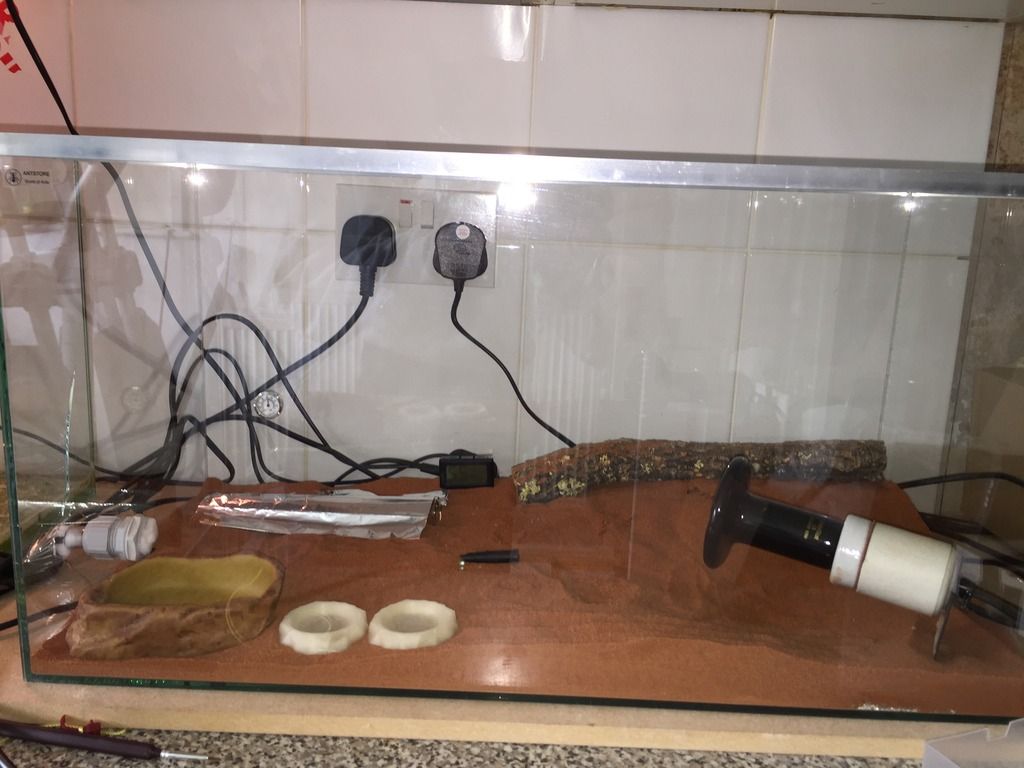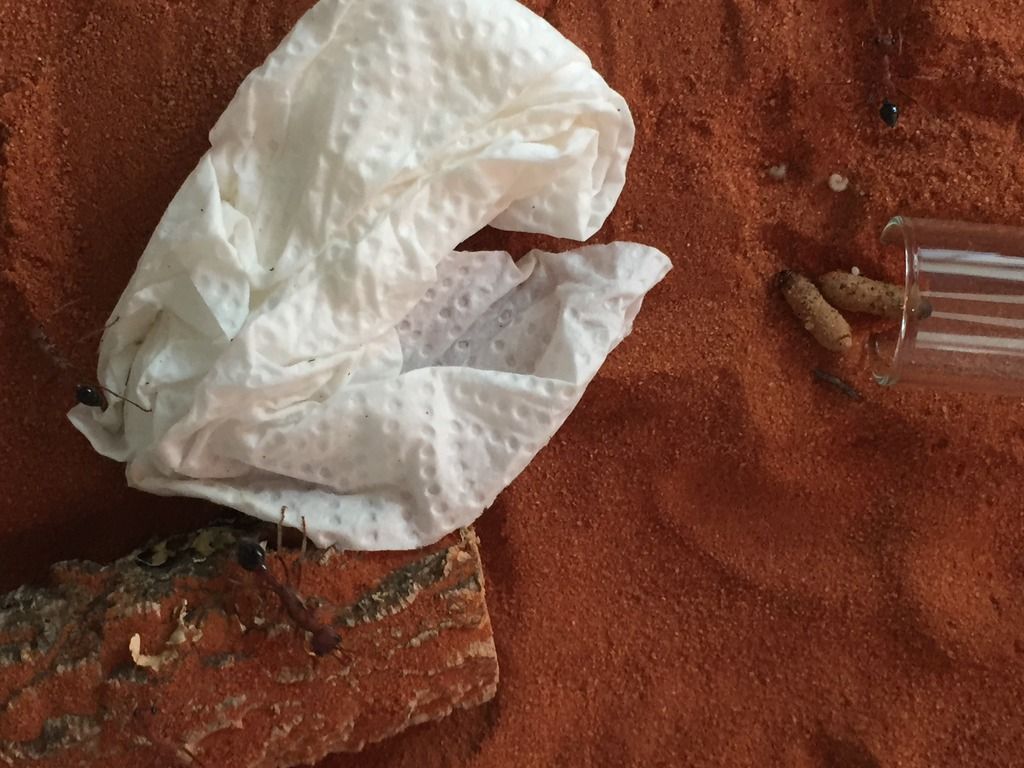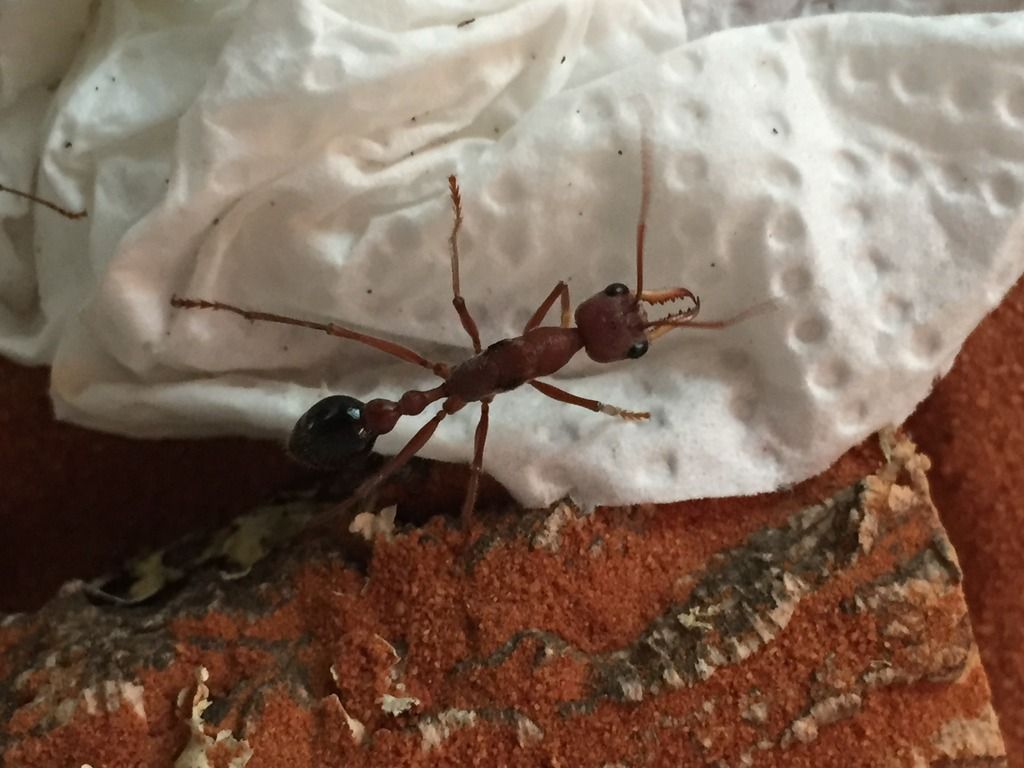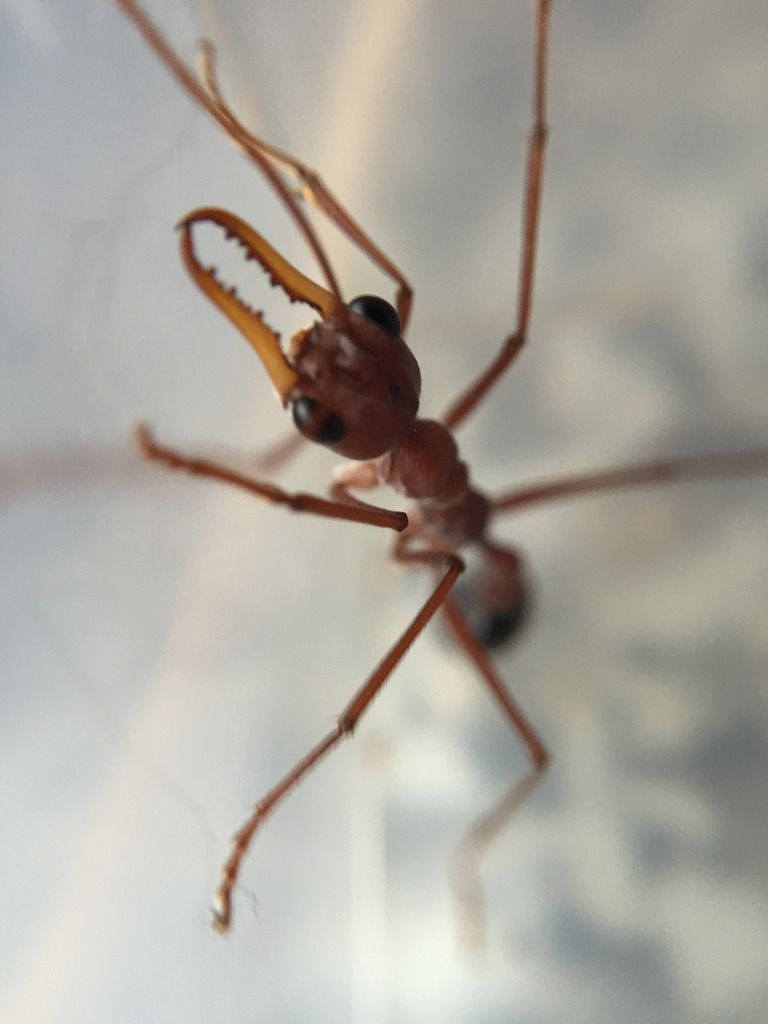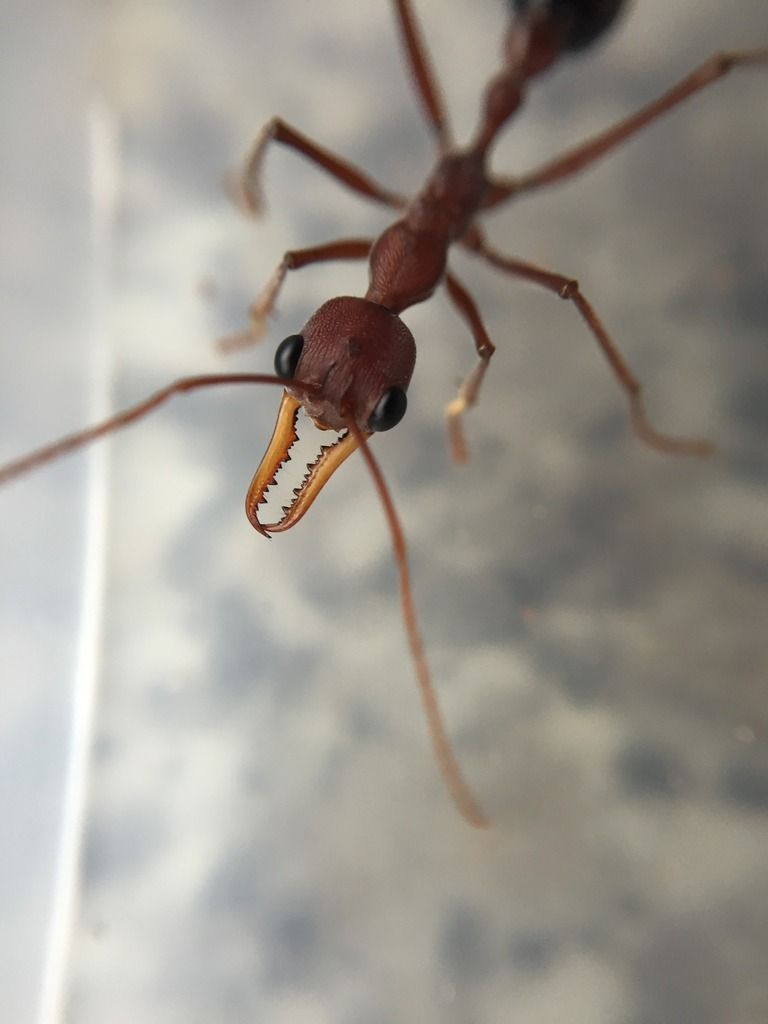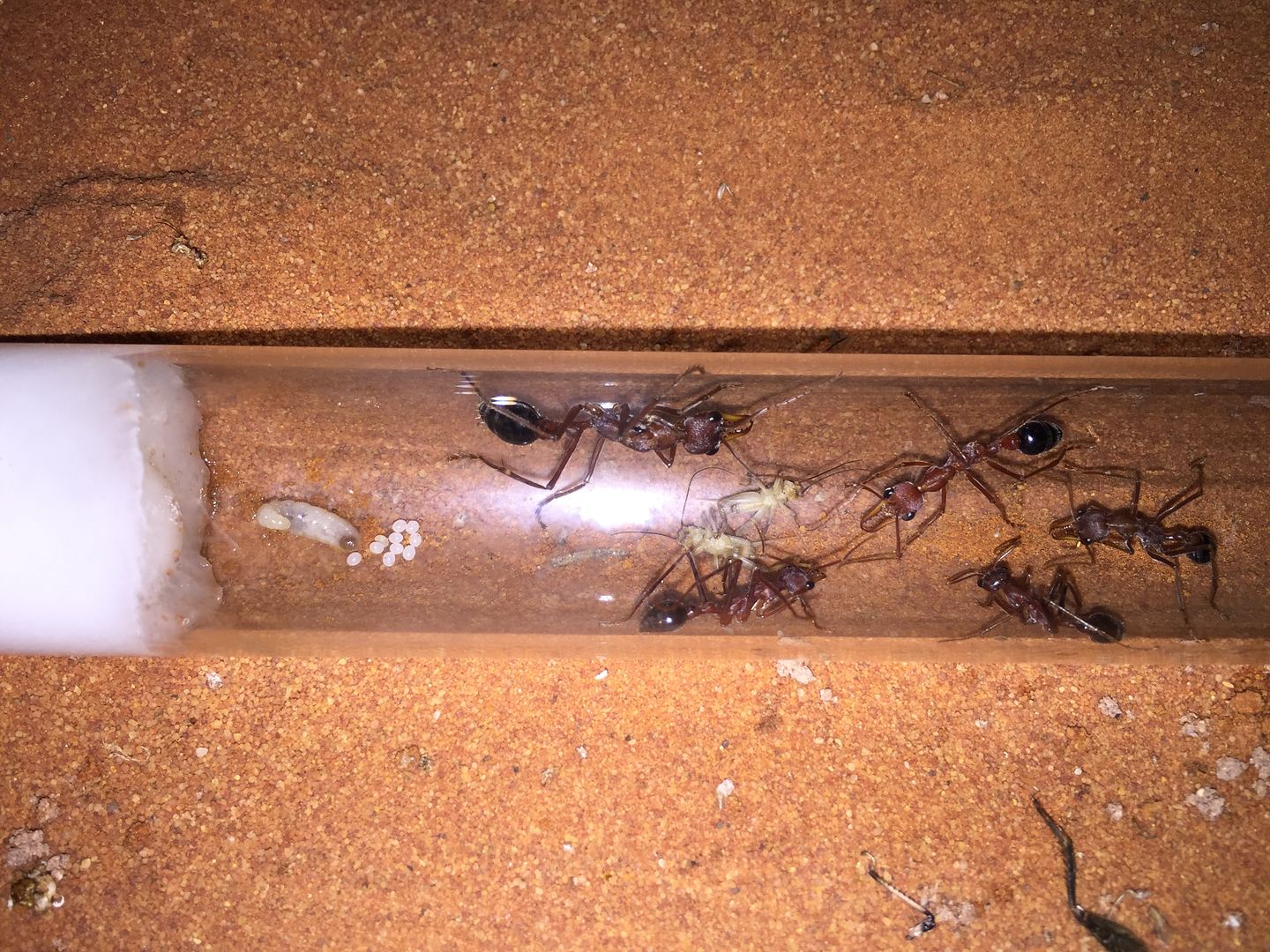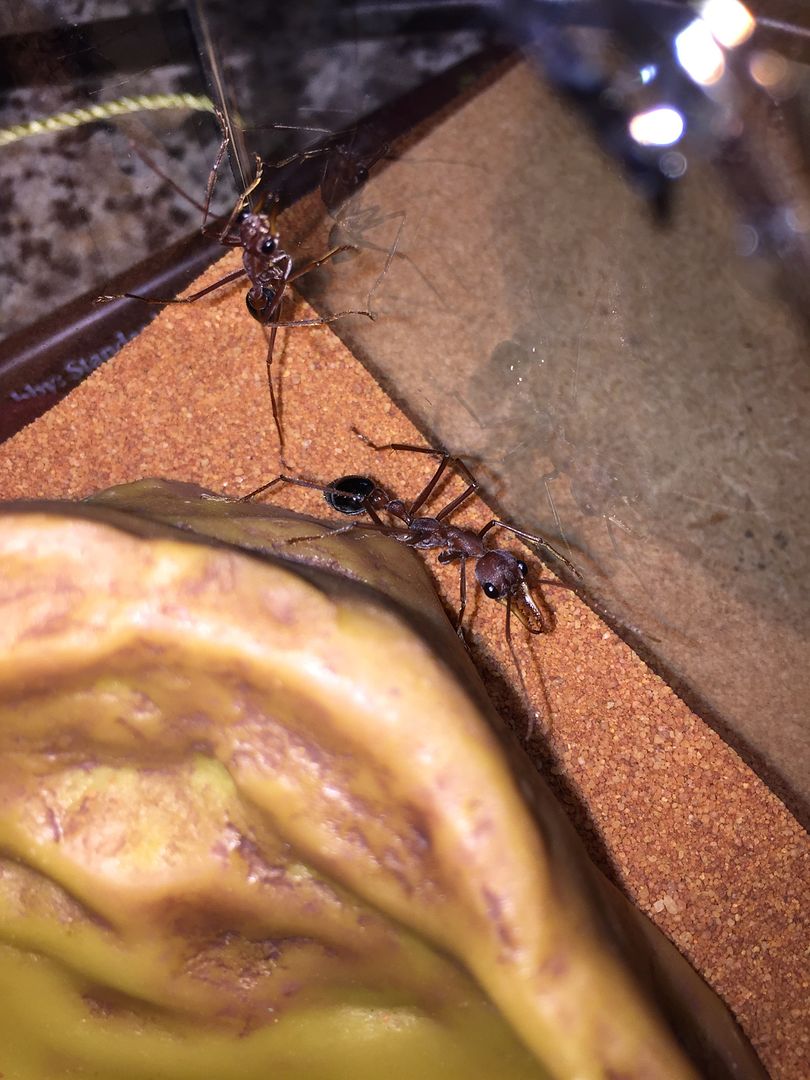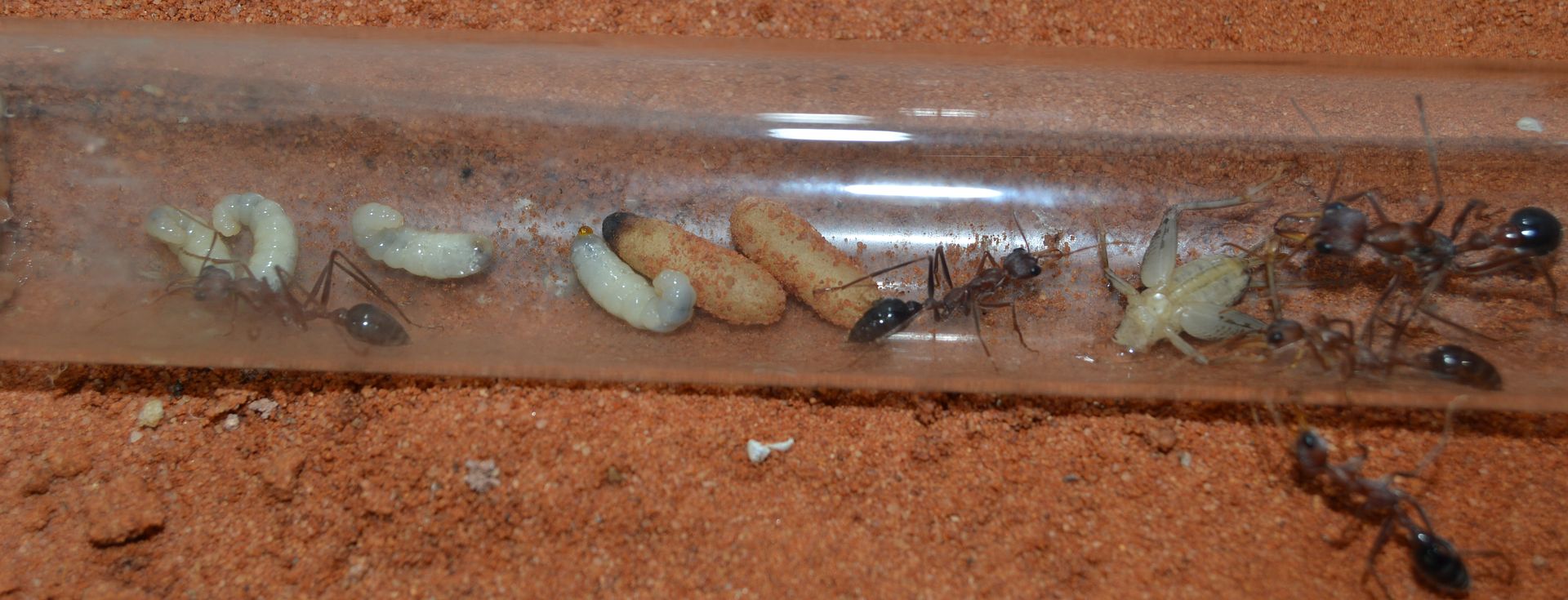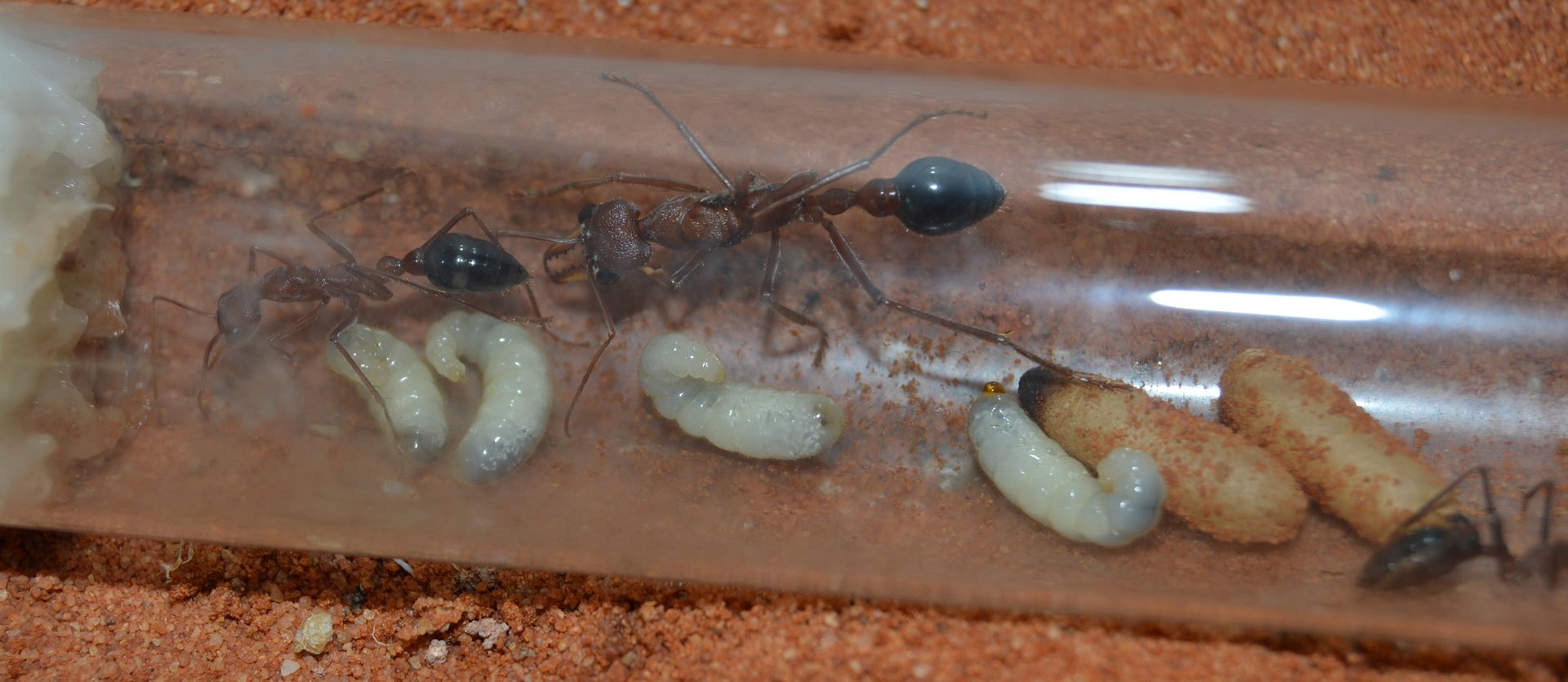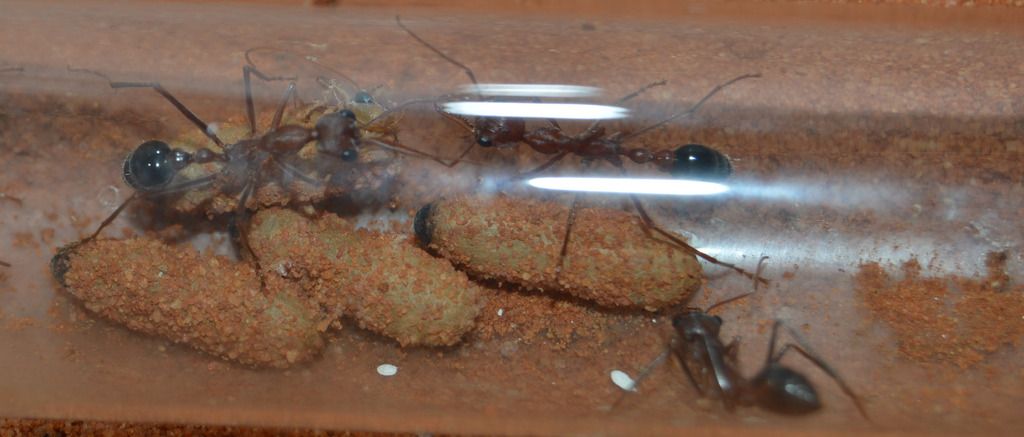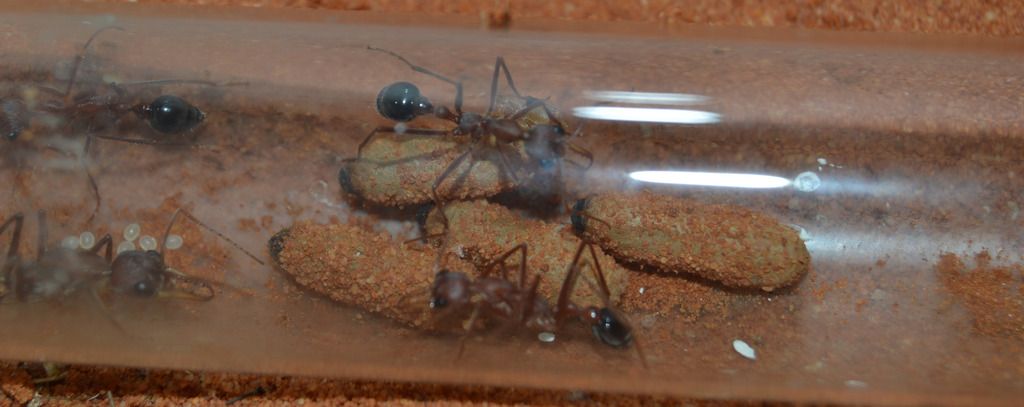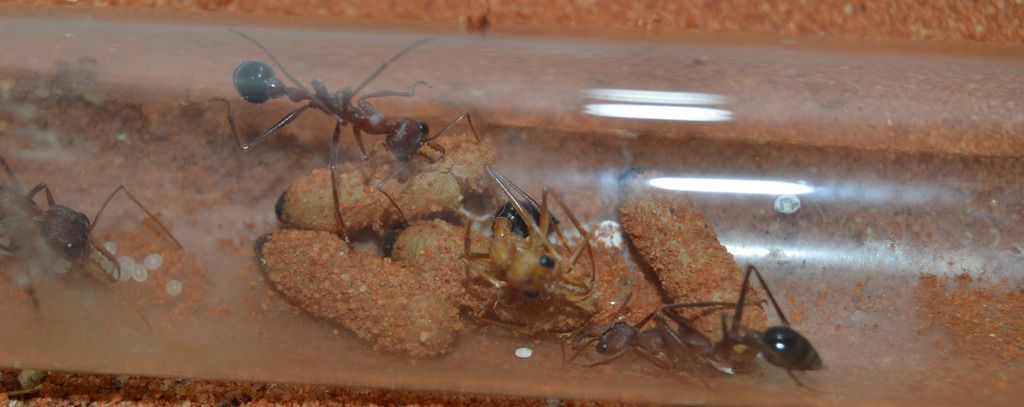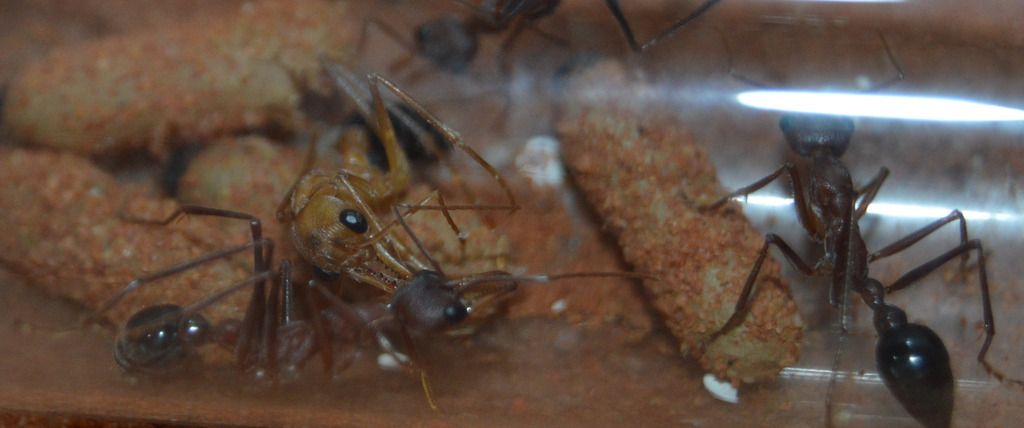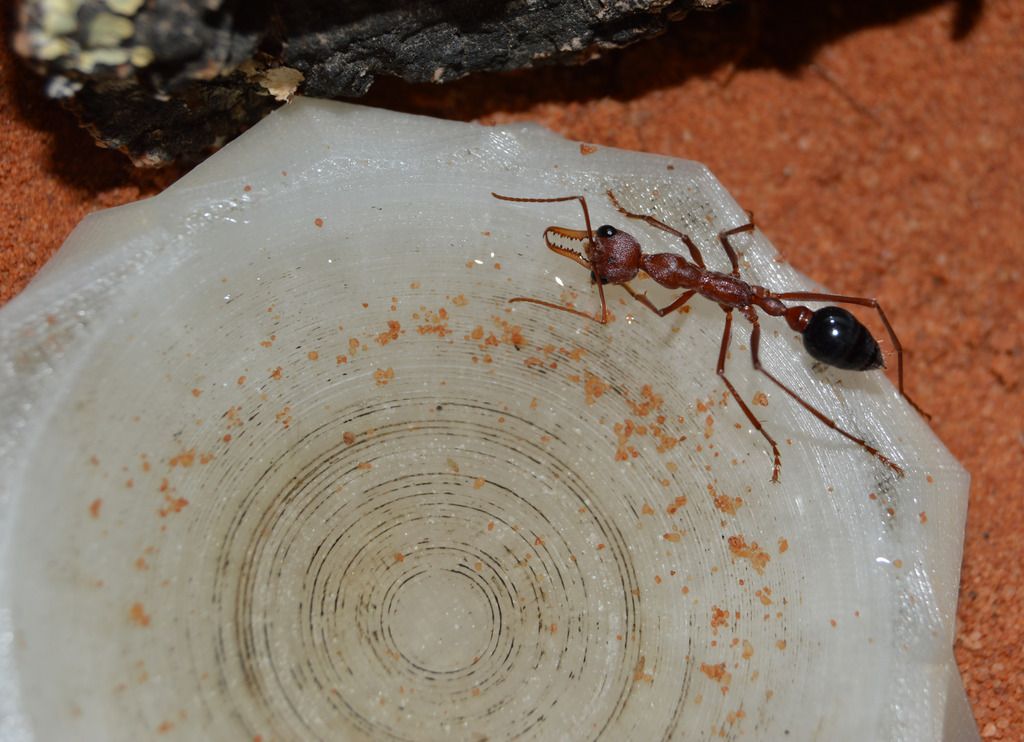Myrmecia pavida - Haltungsbericht
Post 39220 - 29.06.2016 15:58:27
Taxonomy:
- Family: Formicidae
- Subfamily: Myrmecinae
- Genus: Myrmecia
- Species: pavida
- Binomial Nomenclature: [latin]Myrmecia pavida[/latin]
Origin: Australia
Features: excellent sight and hunting abilities
Hibernation: Diapause July through to September at 10-15°C
Appearance of the queen: 26-30mm Brown-to-Light Brown/Red body, Black gaster, Visible Yellow tinge to mandibles
Appearance of the workers: 18-24mm Brown-to-Light Brown/Red body, Black gaster, Visible Yellow tinge to mandibles
Nest building: Soil
Food: sugar water, insects, fruit
Temperature: 26 - 28°C, but can tolerate much lower temperatures, 5-15°C
Humidity: 50 - 60% (Dry, desert conditions)
First of all, apologies for this being in English, I will try and use the few German words that I know :).
Well I find myself in the rare position of owning the beautiful, the famous, [latin]Myrmecia pavida[/latin]. The kleine kolonie is absolutely amazing, the gyne is huge and I think there is also a larger worker amongst the group. They are quick to detect movement and even as I was moving my hand around in the setup, they were following my hands.
The colony numbers:
Gyne: 1
Arbeiterinnen: 5
Pupae: 1
Larven: 2
Eggs: 4
Pictures are not great but here we go:
Post 39221 - 29.06.2016 15:59:01
Here's the macro shots of the worker I got out yesterday:
And here's a video of the worker, very calm I have to add:
Post 39222 - 29.06.2016 15:59:17
Live Stream of the colony, the camera is focused on the entrance to the boiling tube where the ants are residing:
Post 39240 - 30.06.2016 07:00:25
Diskussion can be held in this thread.
Post 39262 - 05.07.2016 17:14:34
hey,
Great report so far - I love how attentive and beautiful they are.
Keep us up to date ![]()
Post 39272 - 07.07.2016 19:27:50
The sixth worker eclosed sometime Monday. I checked this morning and saw the light coloured worker but didn't stop to take a picture. I managed to spot 1 larger larva which will have been feasting on the small cricket which was happily murdered by these ants.
Post 39276 - 08.07.2016 14:03:04
Things are professing very well, the larva has grown considerably in size after eating the cricket, there are now 2 more mini crickets ready for the larva to feast on and 1 medium cricket also. The Queen has settled down and laid another nine eggs which takes the total to 10, exciting stuff!
Stats so far:
Queen: 1
Workers: 6
Pupae: 0
Larvae: 1
Eggs: 10
Post 39319 - 16.07.2016 10:16:25
The single larva pupated and spun a cocoon:
Post 39802 - 30.08.2016 10:05:56
This small colony is doing well, they take about two standard sized crickets per day and there are now four very large larvae, development is surprisingly faster than I expected :). The larvae have been feeding on the crickets and increasing in size along the way. The two cocoons remain, but soon I reckon they will eclose, in a couple of weeks or so.
Post 39822 - 04.09.2016 16:24:33
All the larvae have now pupated and spun a cocoon :).
Post 39937 - 07.10.2016 09:48:04
I just witnessed a callow ant eclosing from a cocoon! Exciting stuff, this new worker is larger than her sisters and a beautiful golden colour before she darkens. There are now 5 workers after a few of the older workers died, with a newly laid batch of eggs and 3 cocoons. The time between larva to pupa is short but the time from pupa to worker is considerably longer.
I'm very pleased with the last picture, enjoy ![]()
